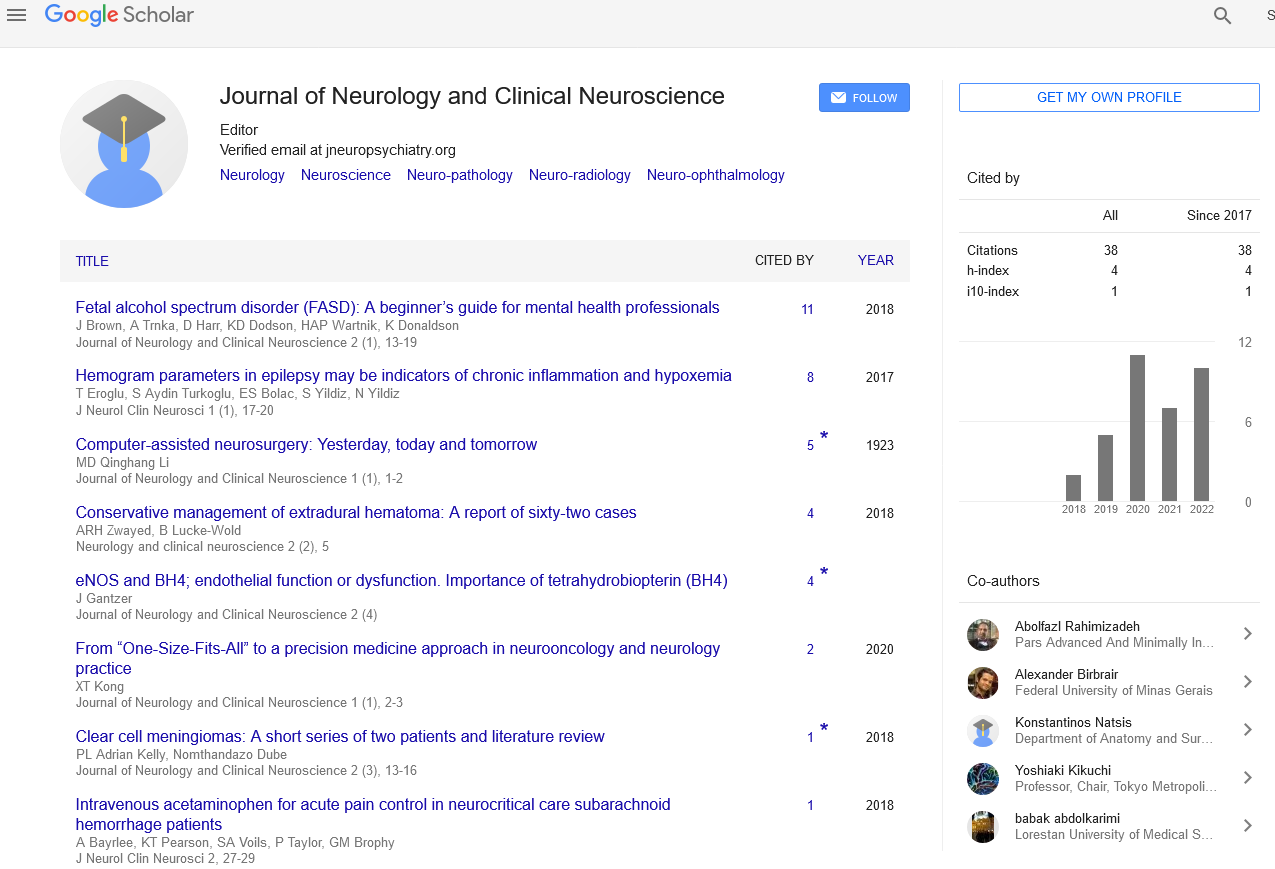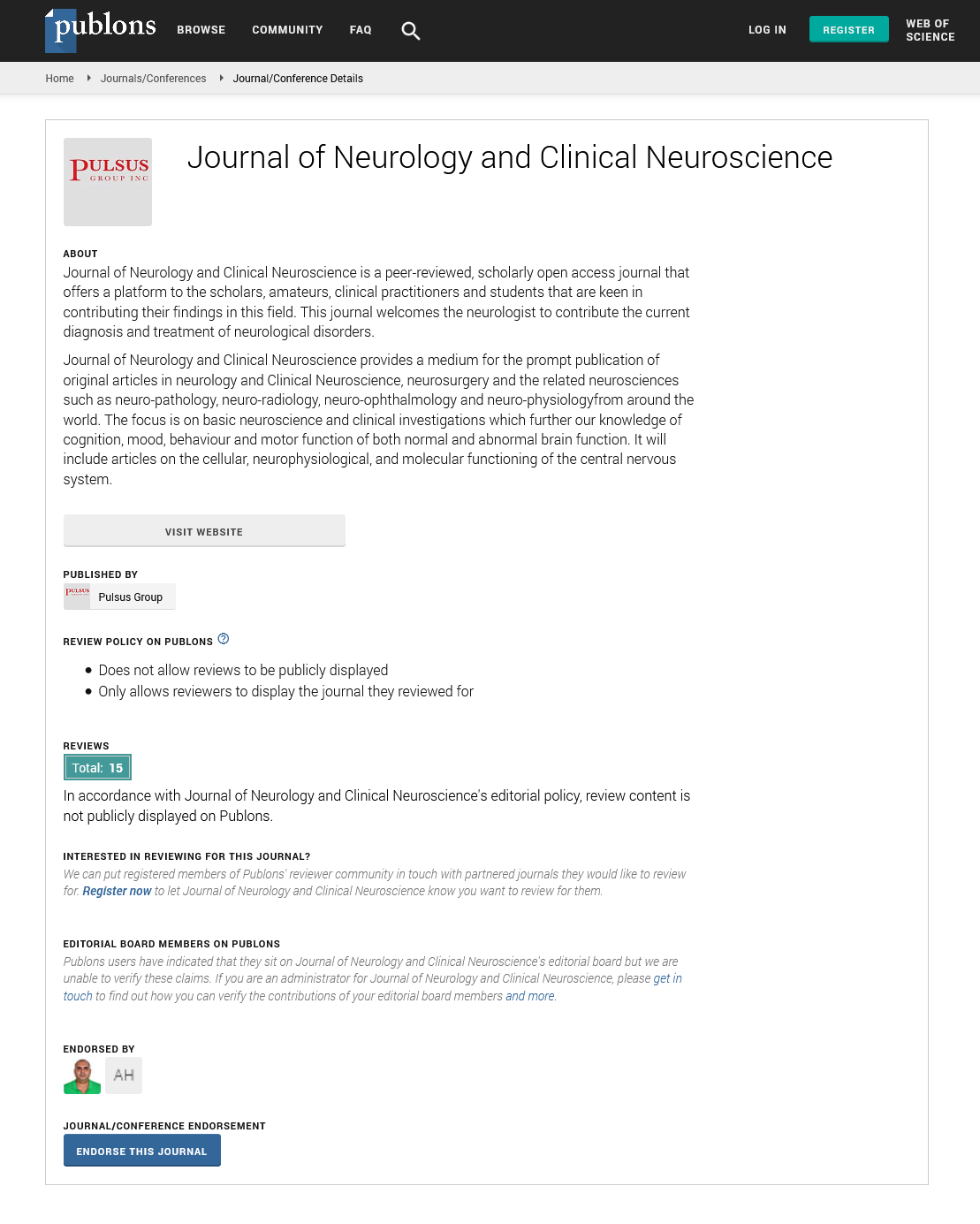MtDNA deletions and G>A transversions may be cause or consequence of refractory temporal lobe epilepsy with hippocampal sclerosis
2 University of Tunis El Manar and Genomics Platform, Pasteur Institute of Tunis, Tunisia
Received: 14-Aug-2018 Accepted Date: Aug 27, 2018; Published: 10-Sep-2018
Citation: Finsterer J and Zarrouk-Mahjoub S. MtDNA deletions and G>A transversions may be cause or consequence of refractory temporal lobe epilepsy with hippocampal sclerosis. J Neuropathol. 2018;1(1):2-4.
This open-access article is distributed under the terms of the Creative Commons Attribution Non-Commercial License (CC BY-NC) (http://creativecommons.org/licenses/by-nc/4.0/), which permits reuse, distribution and reproduction of the article, provided that the original work is properly cited and the reuse is restricted to noncommercial purposes. For commercial reuse, contact reprints@pulsus.com
In a recent article, Volmering et al. reported about histopathological and genetic studies of surgical specimens in 74 patients undergoing mesiotemporal hippocampectomy for drug-resistant temporal lobe epilepsy [1]. The authors found that in patients with hippocampal sclerosis the number of the 7436 base pair deletion, of G>T transversions, and of Tlymphocytes were increased compared to patients with temporal lobe epilepsy but without hippocampal sclerosis. We have the following comments and concerns.
Regarding the accumulation of mitochondrial DNA (mtDNA) mutations in the hippocampus as causative for hippocampal sclerosis respectively temporal lobe epilepsy is speculative since the increased amount of mtDNA mutations could be a secondary epiphenomenon or also derive from a disease of another origin. Assuming that the detected mtDNA deletions and variants are the consequence of mitochondrion-toxic antiepileptic drug (AED) treatment [2], it is worthwhile to know which type of AEDs the 74 patients received. Particularly carbamazepine, valproic acid, phenytoin, or phenobarbital are regarded as AEDs with a high mitochondrion toxic potential. Over which period of time and in which dosage were mitochondrion-toxic AEDs applied? Did heteroplasmy rates of mtDNA deletions correlate with the dosage and duration of intake of mitochondrion-toxic AEDs? Did patients with (n=54) and without (n=20) hippocampal sclerosis receive other AEDs?
It is speculative that the described mtDNA variants resulted from increased generation of reactive oxygen species (ROS) . Was the concentration of ROS ever measured in any of the patients to proof or disprove this hypothesis? Were activities of respiratory chain complexes ever measured in the specimens to see if mtDNA variants reduced respiratory chain activity? It could be helpful to revise magnetic resonance spectroscopy or cerebrospinal fluid investigations prior to surgery to see if there was regional lactate elevation in the temporal lobe. Causes of increased ROS production could be the epileptic activity, local inflammation, lactic acidosis, or the mtDNA variants. Was there a positive correlation between the CSF lactate level and the amount of mutated mtDNA or between the amount of ROS and the heteroplasmy rate?
Assuming that the detected mtDNA deletions and mtDNA G>A transversions are the cause of a primary mitochondrial disorder (MID) and not secondary to AED toxicity, ROS production, inflammation, or seizure activity, we should know how many of the 74 included patients had abnormalities in organs other than the central nervous system. Multisystem disease is a strong clinical indicator for a MID. How many had neuropathy, myopathy, cataract, glaucoma, retinopathy, impaired hearing, endocrine abnormalities, cardiac disease, in particular cardiomyopathy of any type and arrhythmias, gastrointestinal disease, kidney disease, bone disease, or skin abnormalities, abnormalities in organs or systems commonly affected in MIDs [3]?. Were first degree family members investigated for clinical manifestations of a MID, in particular epilepsy? In how many of the 74 patients was the family history positive for epilepsy? Is it conceivable that hippocampal sclerosis was the result of a previous stroke-like lesion?
We wonder if the 7436 base pair or other mtDNA deletions were present also in other brain regions or other tissues. To assess the potential pathogenicity of the described mtDNA variants, it would be helpful to mention the heteroplasmy rates of the described mtDNA variants in tissues such as hair follicles, buccal mucosa cells, muscle, skin fibroblasts, lymphocytes, and urinary epithelial cells. Were heteroplasmy rates different between different layers of the hippocampus and parahippocampus or tissues other than the central nervous system? How to explain that predominantly a single mtDNA deletion of 7436 base pairs with the same extent was detected in >90% of the investigated patients? Did any of those carrying mtDNA deletions present with phenotypic features indicative of a MID? Did those carrying a single mtDNA deletion manifest with chronic progressive external ophthalmoplegia (CPEO), Kearns-Sayre syndrome (KSS), or Pearson syndrome (PS), the MIDs most frequently associated with single mtDNA deletions? Were mtDNA deletions also detected in patients with temporal lobe epilepsy but without hippocampal sclerosis? Did the G>T transversions affect coding or noncoding regions? In case the transversion occurred in coding regions, which genes were mutated? Were the G>A transversions regarded as pathogenic or benign? Was any of the previously described >100 mtDNA mutations, known to cause MID [4], detected? .
It is conceivable that the inflammatory response was secondary to epilepsy, to AED toxicity, or secondary to the focal mutation load. The inflammatory response could be also attributed to apoptotic cell death, increased ROS production, autoimmune mechanisms, or even to a focal response to AEDs. Was temporal lobe epilepsy attributable to limbic encephalitis (ID#7) or Rasmussen encephalitis (ID#77) only in these two patients or other patients as well?
A strong limitation of the study is that long-range PCR studies were carried out in only 18 patients with hippocampal sclerosis. Furthermore, one included patient with ganglioglioma WHO I was investigated with long-range PCR, although patients with neoplasms were said to have been excluded from the study.
In conclusion, this interesting study could profit from providing more clinical data about the included patients, from providing data about the heteroplasmy rates of the mtDNA deletions, from clinical and genetic investigations of first-degree relatives, from provision of data about the antiepileptic drug regimen in all included patients, and from exclusion of a MID as the underlying cause of the focal accumulation of mtDNA variants.
Conflicts of Interest
There are no conflicts of interest. Both authors contributed equally.
REFERENCES
- Volmering E, Niehusmann P, Peeva V, et al. Neuropathological signs of inflammation correlate with mitochondrial DNA deletions in mesial temporal lobe epilepsy. Acta Neuropathol 2016;132:277-88.
- Finsterer J. Toxicity of Antiepileptic Drugs to Mitochondria. Handb Exp Pharmacol 2016;3.
- Finsterer J, Bastovansky A. Multiorgan disorder syndrome (MODS) in an octagenarian suggests mitochondrial disorder. Rev Med Chil 2015;143:1210-4.
- Thorburn DR. Mitochondrial disorders: prevalence, myths and advances. J Inherit Metab Dis 2004;27:349-62.





